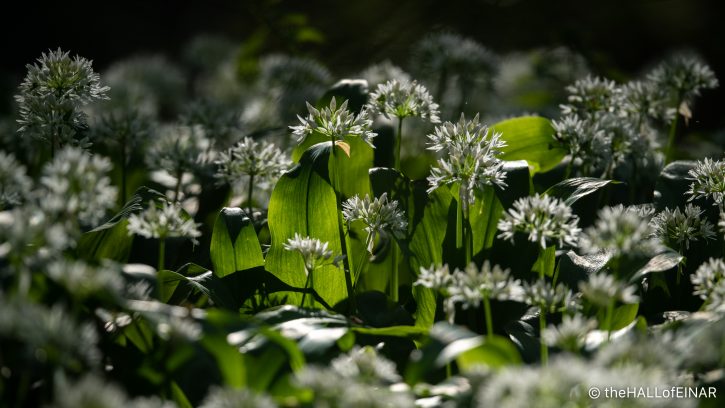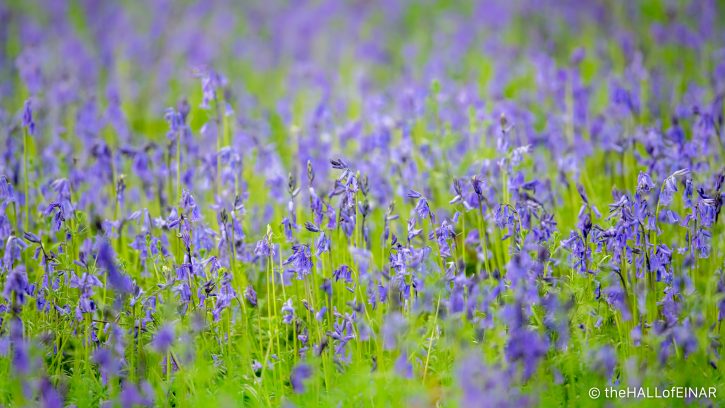Bluebells and Bear’s Garlic

I love this Bluebell wood. These are native Bluebells with their thin stems and nodding heads. Their colour is so intense at its peak, and that green is so fresh I can smell it just looking at the photographs. They’re delicate, so I keep to the path. There’s no point trampling this tiny fragment of old woodland just for an image. I’d rather the bluebells lasted than my photo of them.
There’s also plenty of Bear’s Garlic here which is occasionally pungent as I stray onto a leaf overlapping the tiny badgers’ path.

Sadly, there are no Bears here to enjoy it.

I can’t walk here without thinking of my old biology teacher David Hallett. An infamous essay title of his was, “Why does almost all ground-cover vegetation of deciduous temperate woodland grow from organs of perennation?” I can still remember the entire class groaning, while I wrote it down excitedly, looking forward to doing the research.
The answer is that to grow under deciduous trees you need to get your leaves out early in spring before the trees shade you with their leaves. That means storing food over the winter to give you an early start. Storing food is always a risk, which means that the only Bluebell bulbs to survive are the ones that evolved to be poisonous. Their glycocides are poisonous to humans, dogs, horses and cattle. That doesn’t seem to be a problem with Bear’s Garlic, though. It’s delicious.

As Brown Bears would be happy to confirm, if we hadn’t killed every single one.